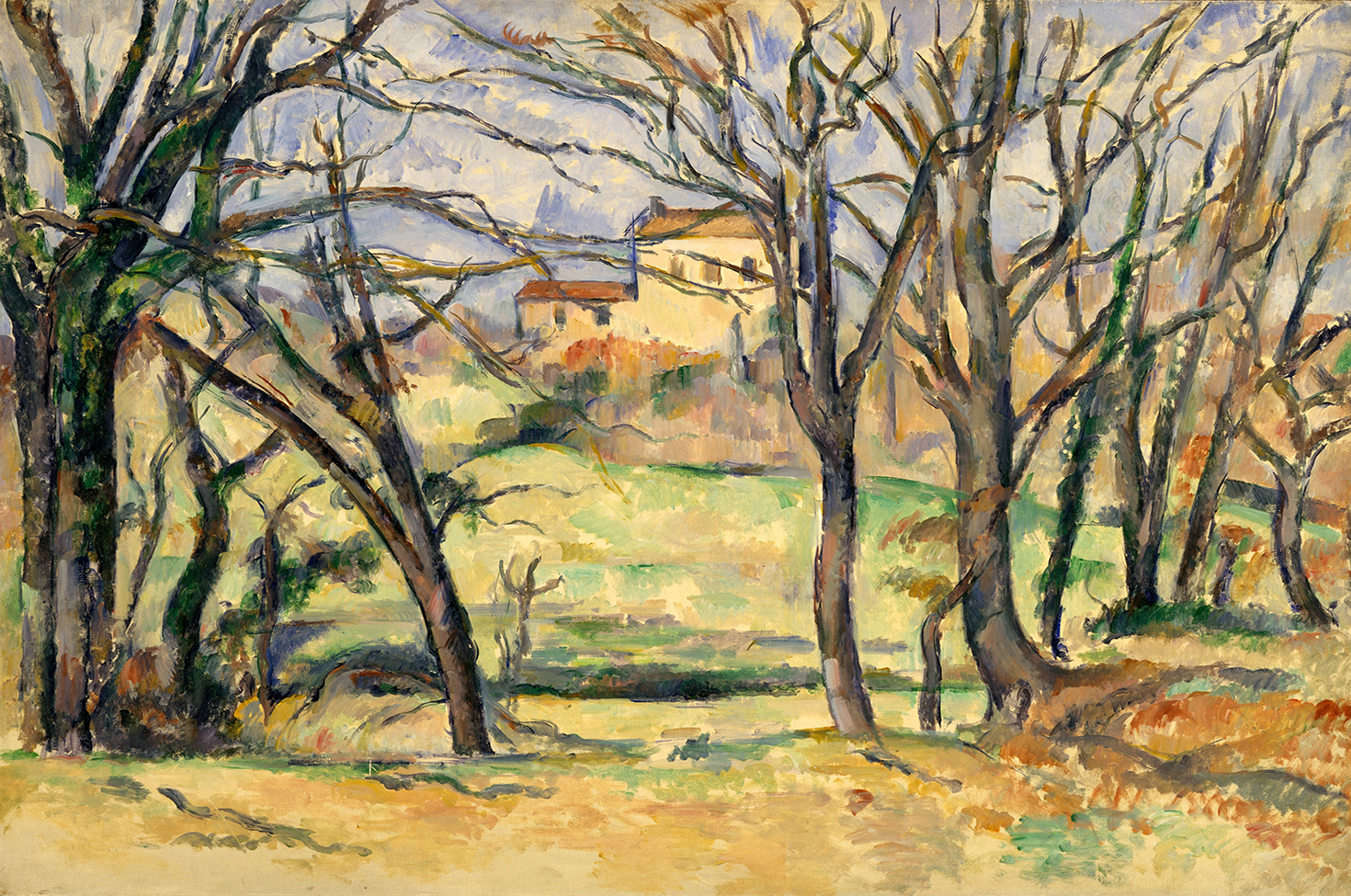
Trees and Houses Near the Jas de Bouffan, by Paul Cézanne, c. 1885. The Metropolitan Museum of Art, Robert Lehman Collection, 1975.
• A story for those eager to learn about medieval poop: “Released into the air is an eye-watering aroma, a smell so concentrated and forceful it seems to take shape as a cloud. The excavators stagger back a step, turning their cheeks as though they’ve been slapped. Van Oosten peers down into the muck, and, with a lilt in her voice, says, ‘Jackpot!’ ” (Archaeology)
• Thanks to the British Library, you can now read the complete works of Roger Pheuquewell online. (The Guardian)
• A prehistory of coloring. (The Public Domain Review)
• On digging up your family’s history—and how to go about doing it. (The New York Times)
• Censorship at a history magazine: “ ‘100 Years Later, Dearborn Confronts the Hate of Hometown Hero Henry Ford’ was slated as the cover story of The Dearborn Historian, a quarterly published by a historical commission appointed by the mayor.” But it was never published. (Columbia Journalism Review)
• Archaeologists just found an ancient Native American canal in Alabama. (AL.com)
• Analyzing thirty years of Dear Abby columns. (The Pudding)
• A short history of blackface. (NewYorker.com)
• How war affected the publication, reception, and writing of In Search of Lost Time. (Literary Hub)
• The early history—and future diluted meaning—of woke. (The Believer)
• This week in obituaries: Renaissance historian and Lapham’s Quarterly editorial board member Theodore Rabb; the lyricist who wrote “Charlie and the M.T.A.”; a prolific novelist; the man who made Tim Hortons ubiquitous; a pharmacist who helped invent ibuprofen; and, for Black History Month, black Americans who deserved obituaries many years before now.